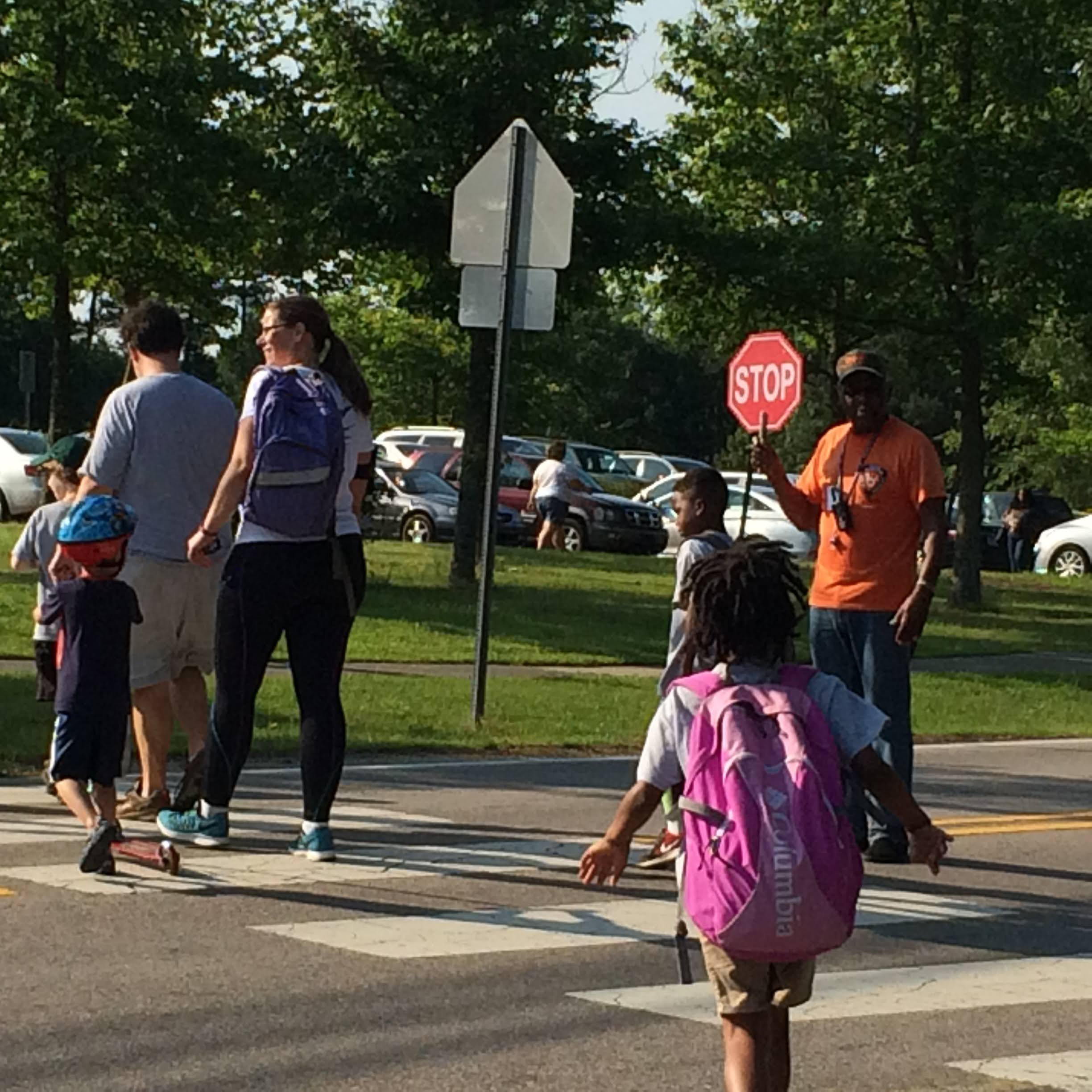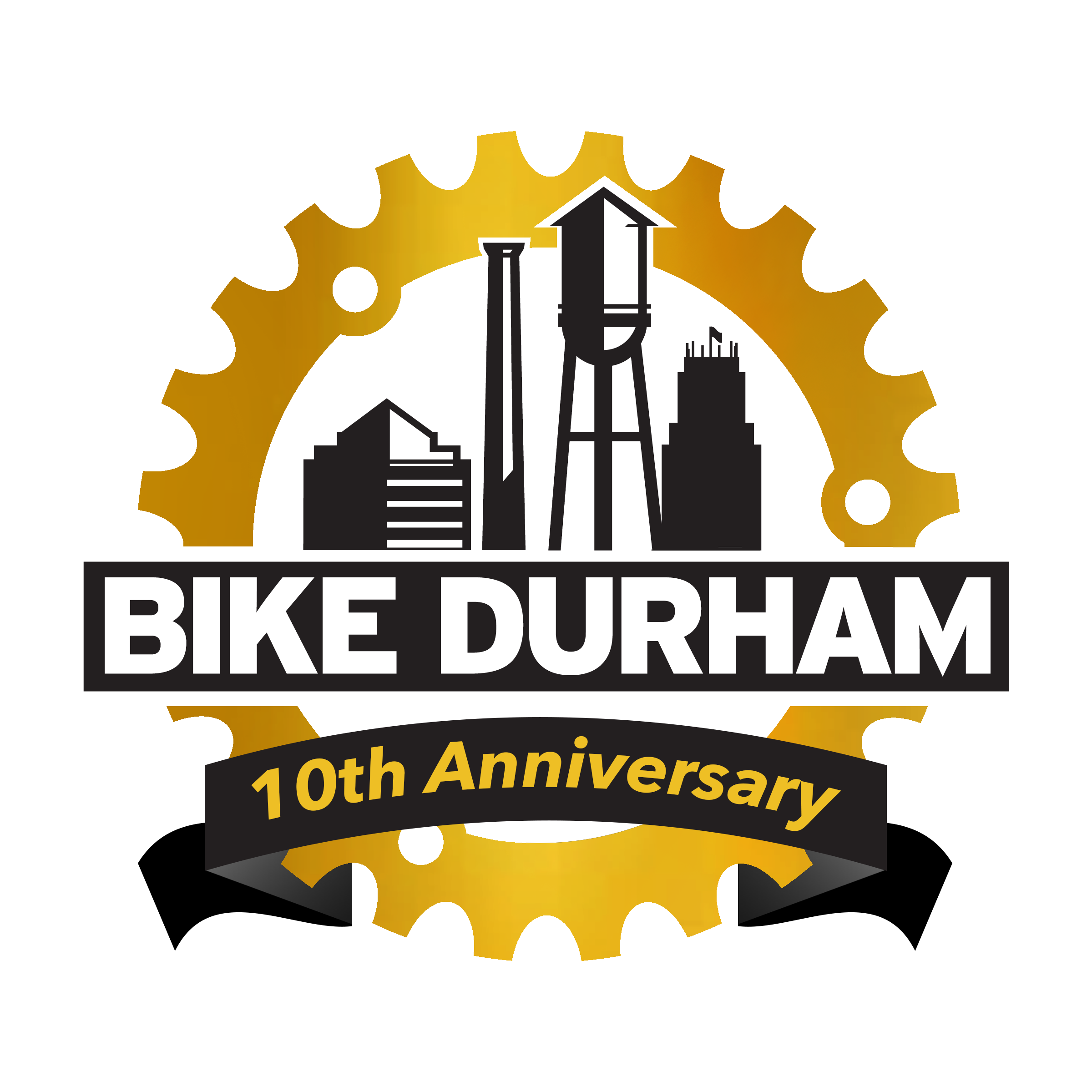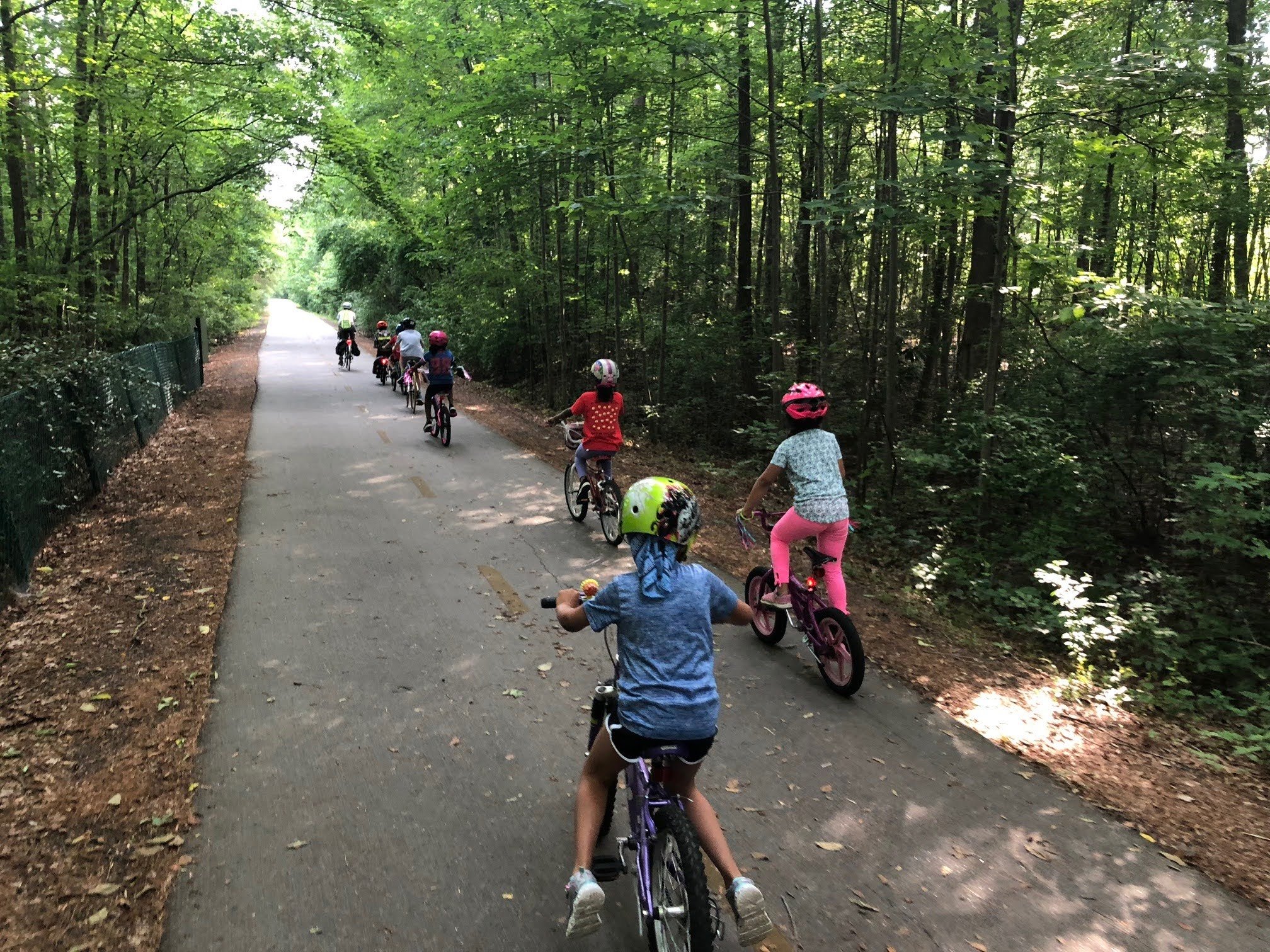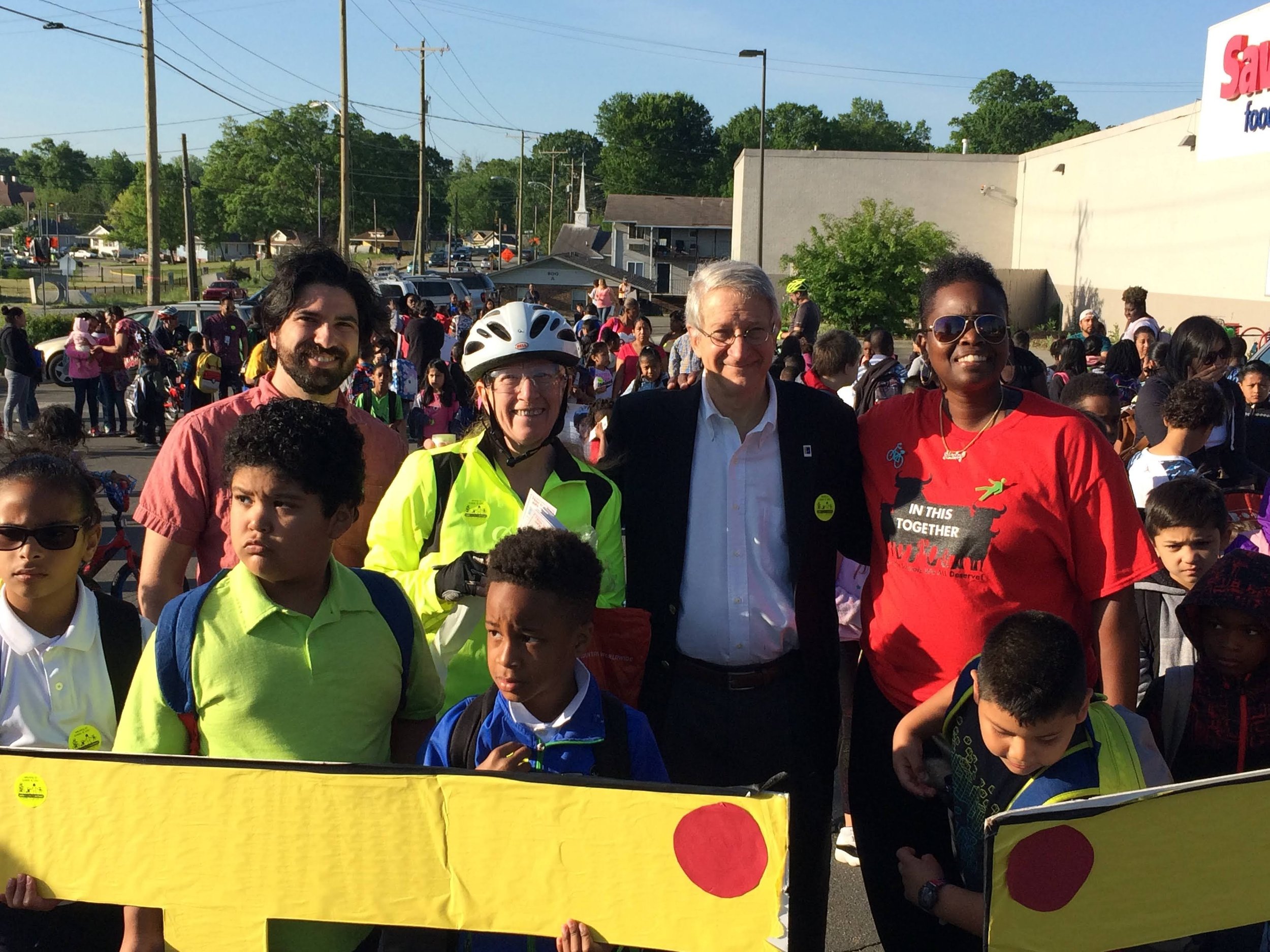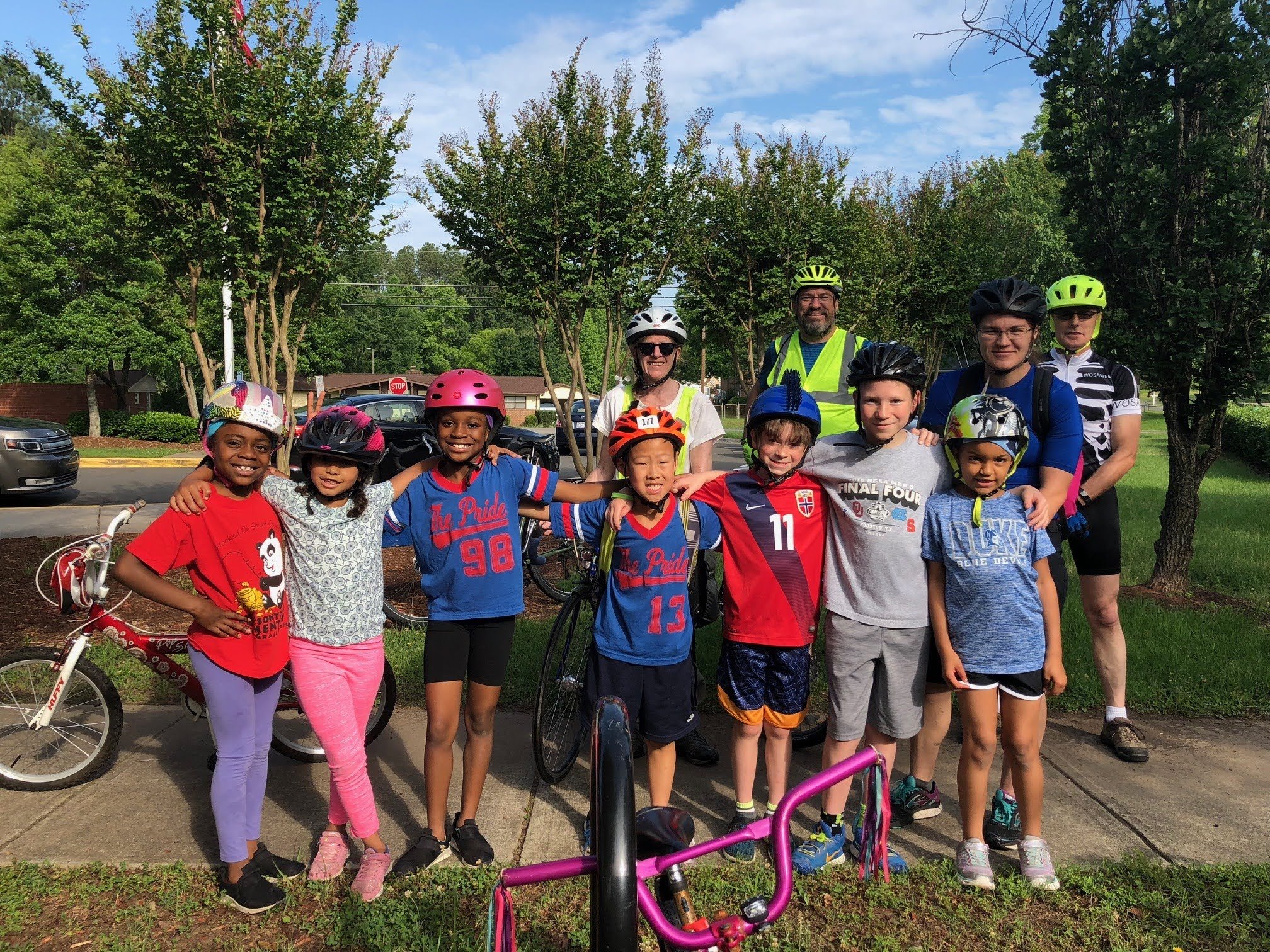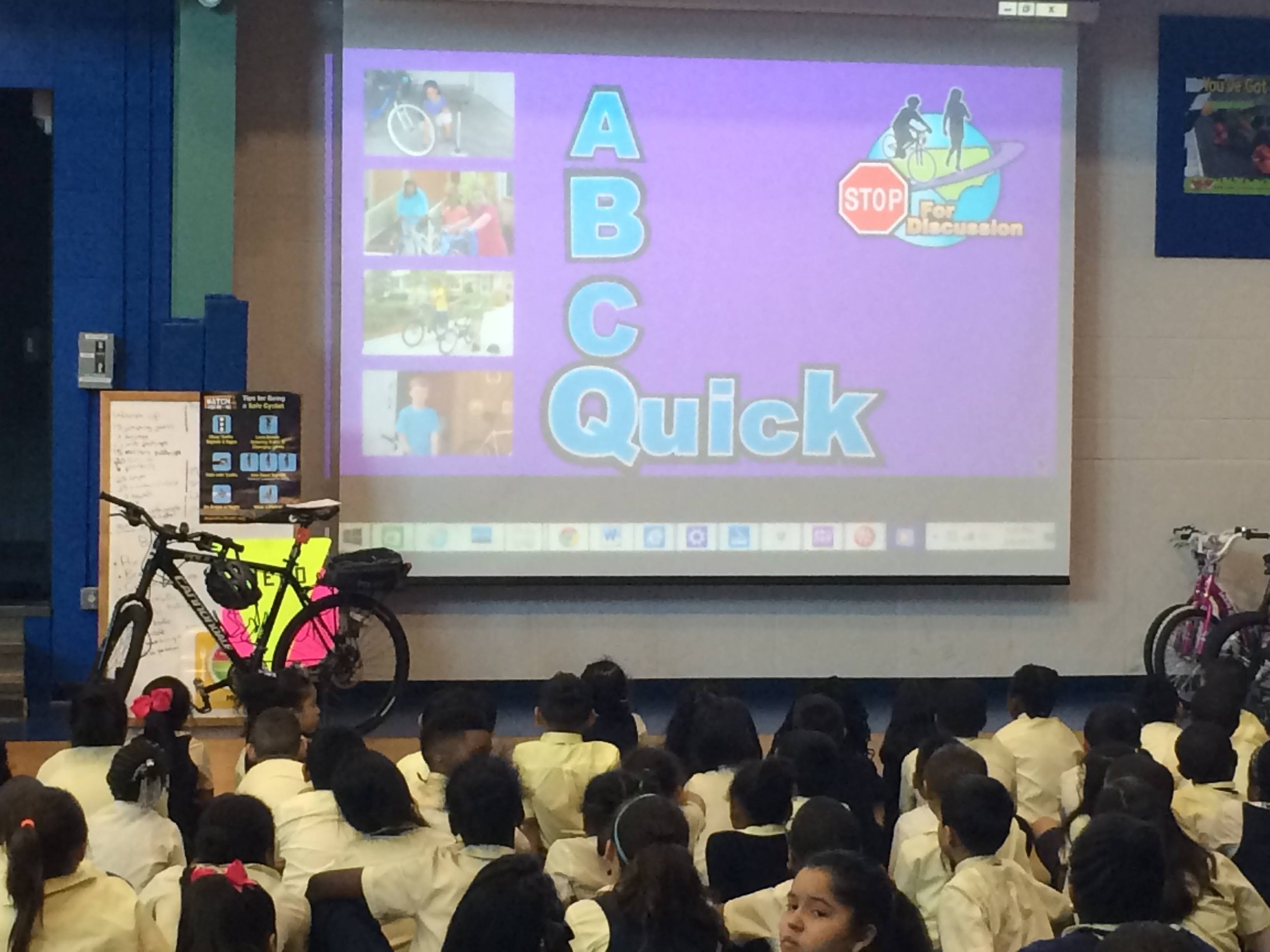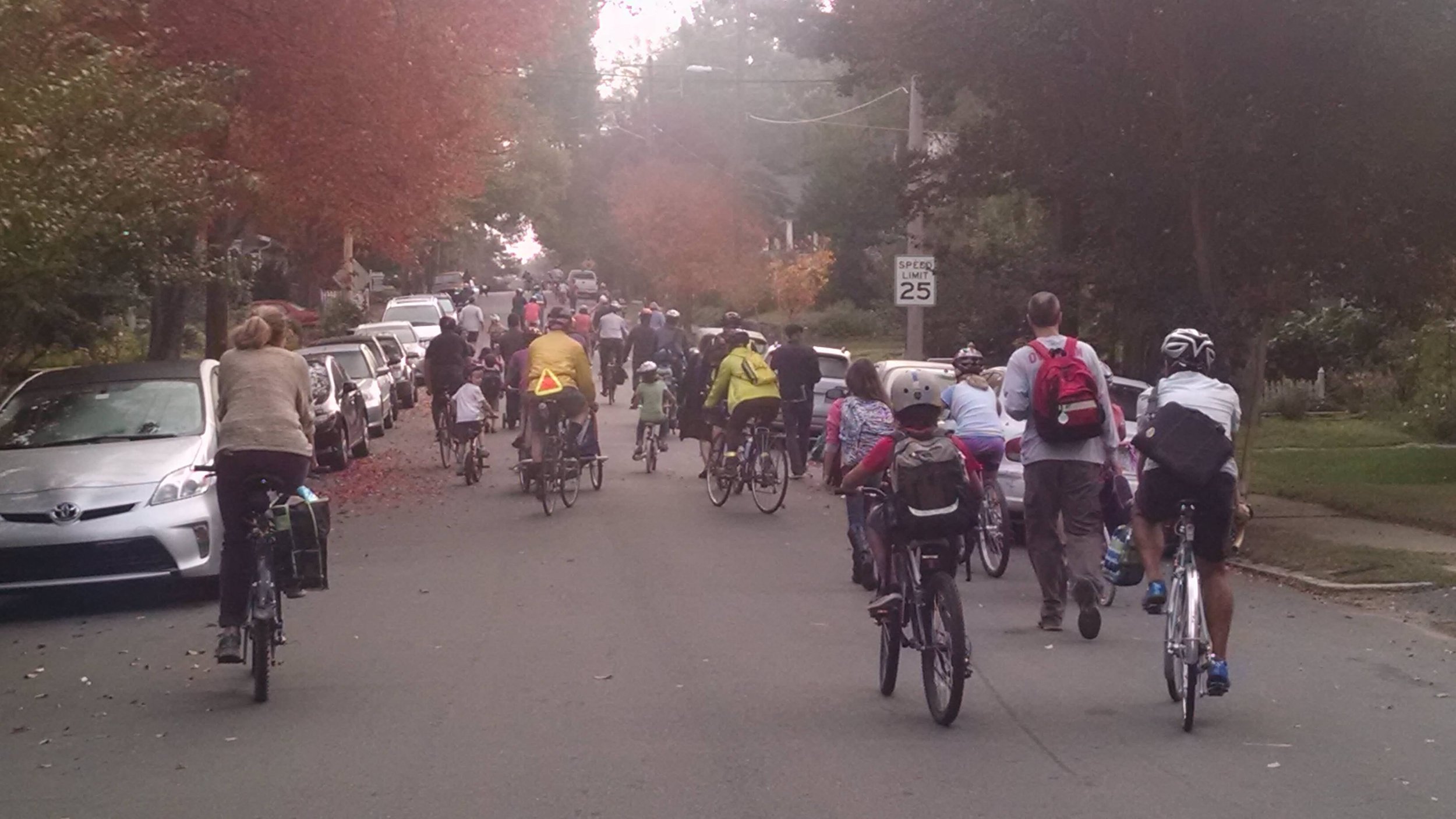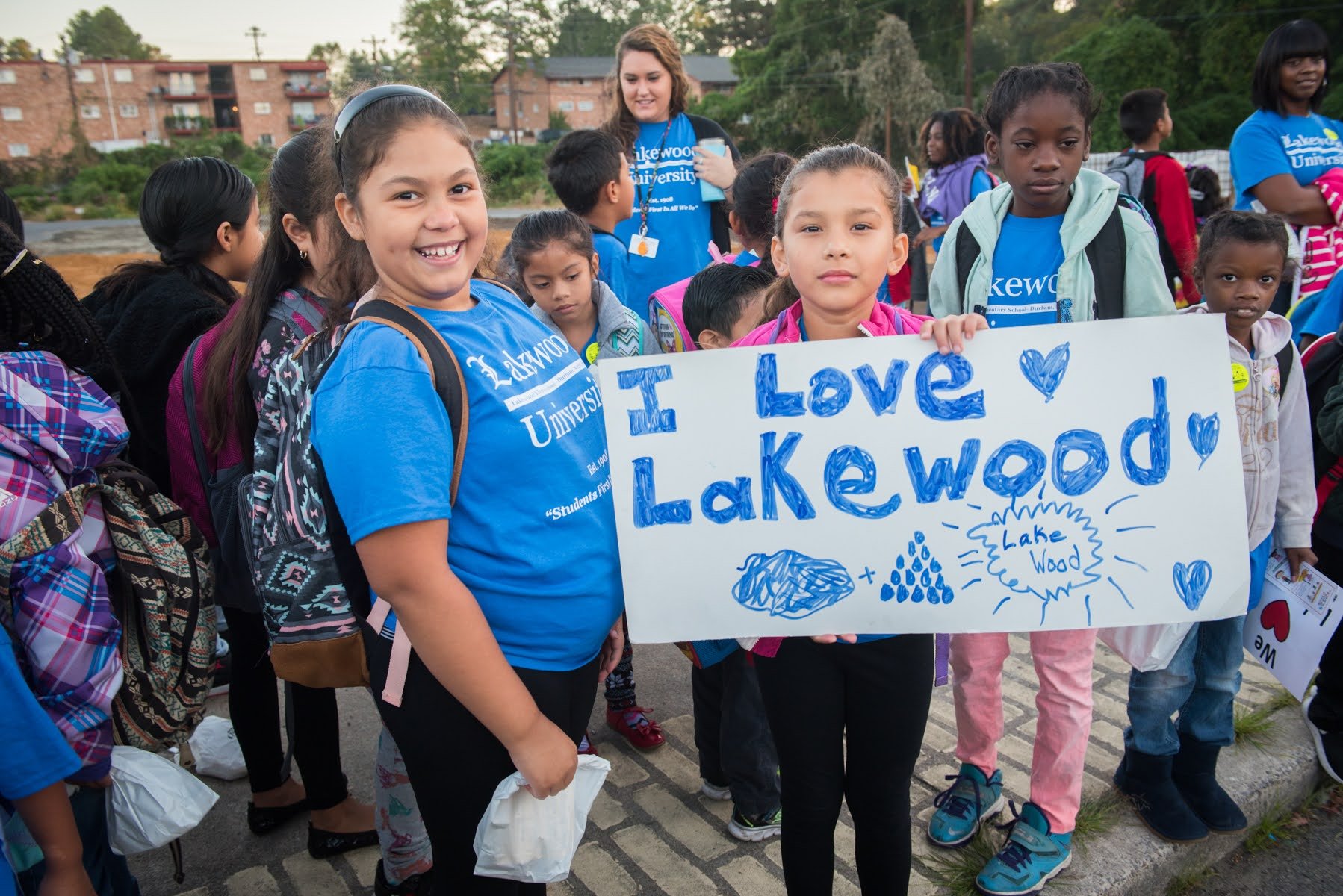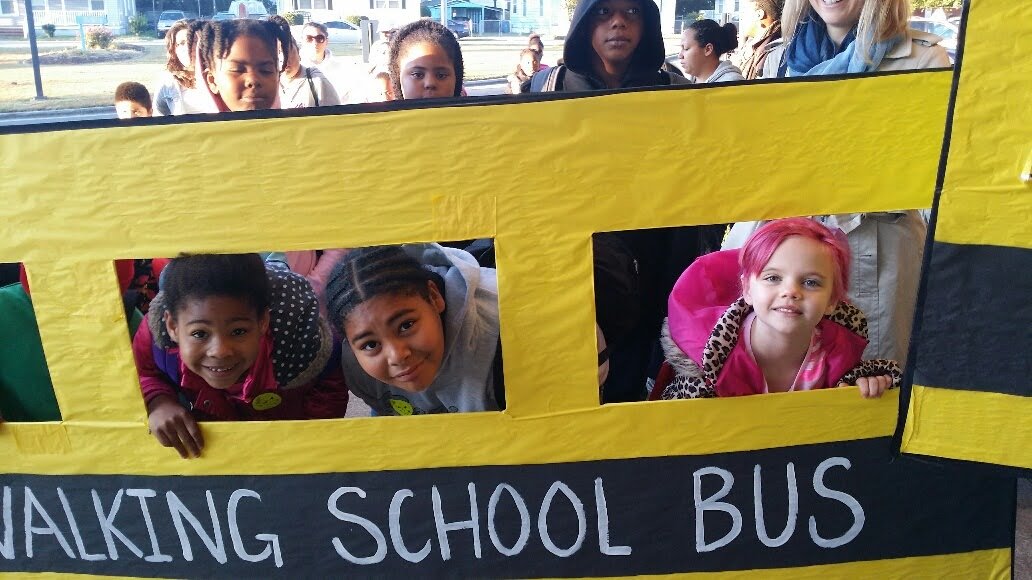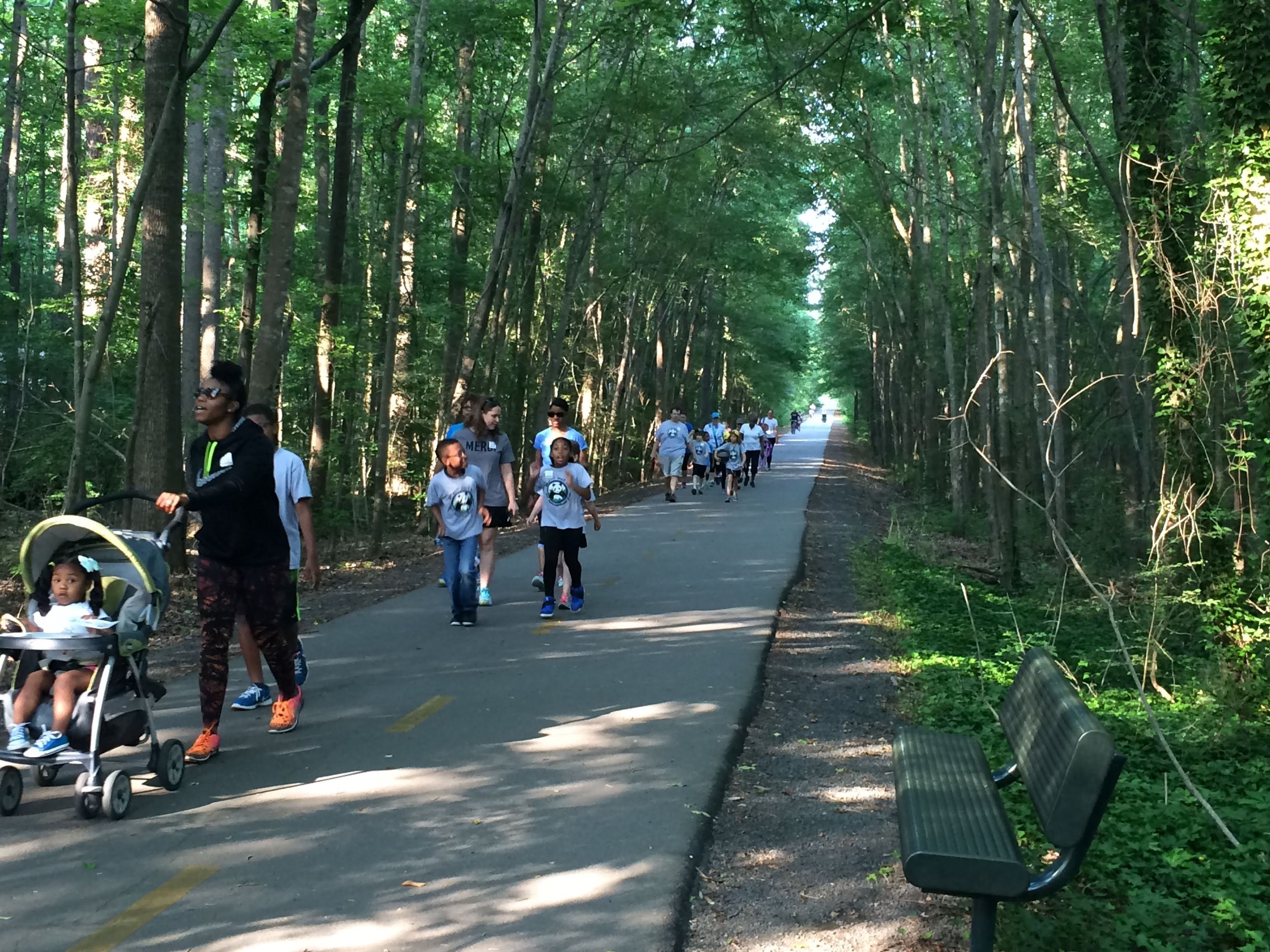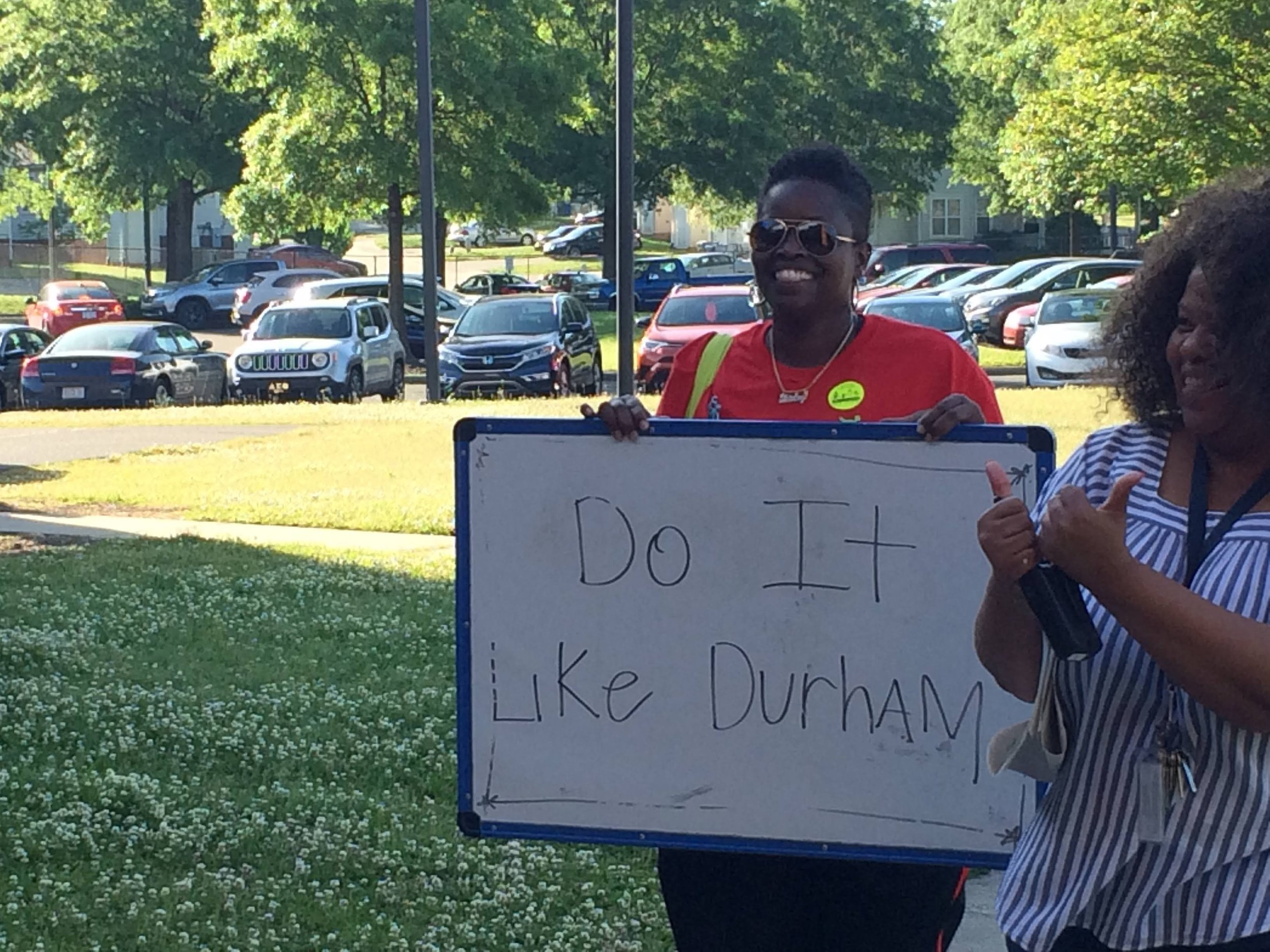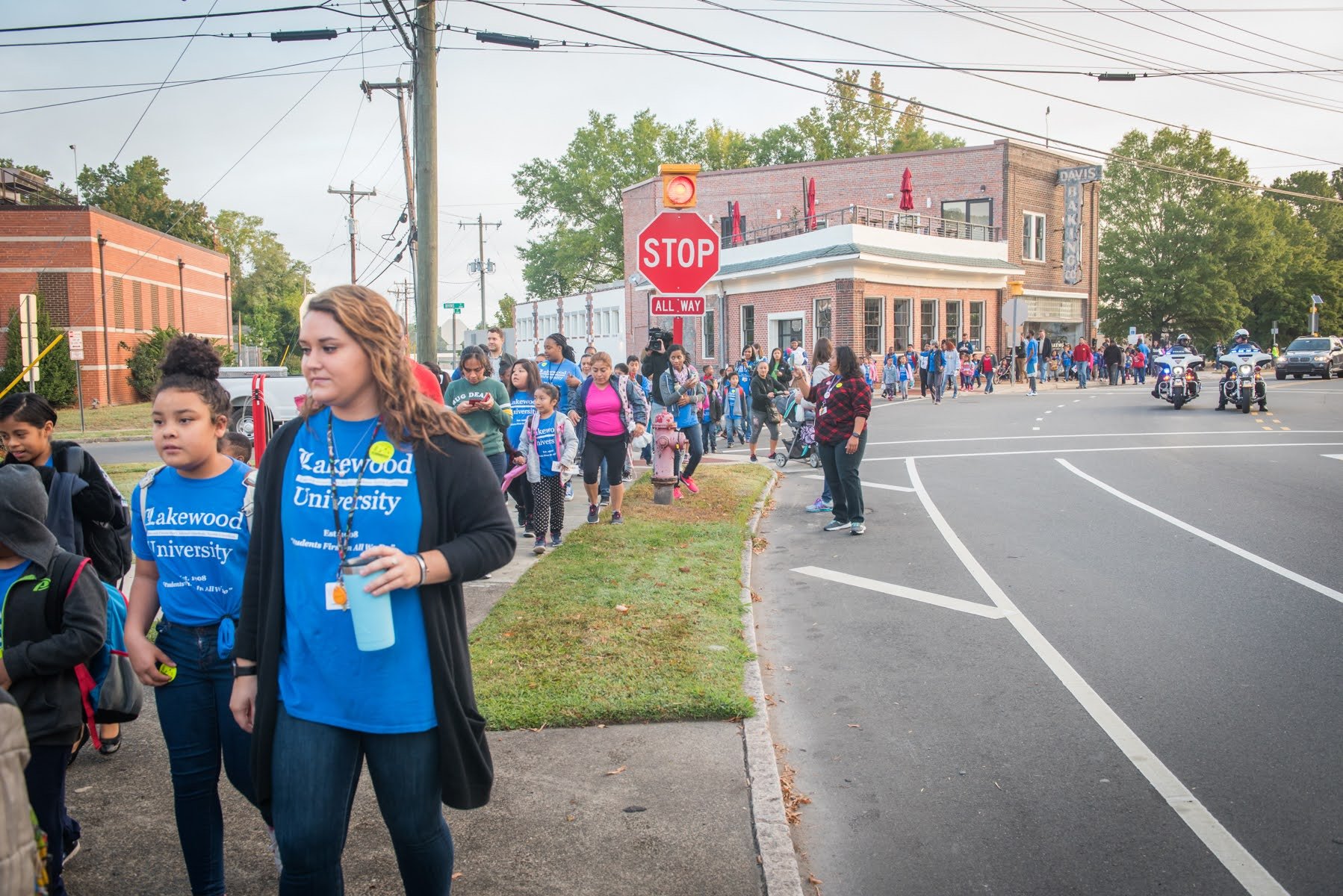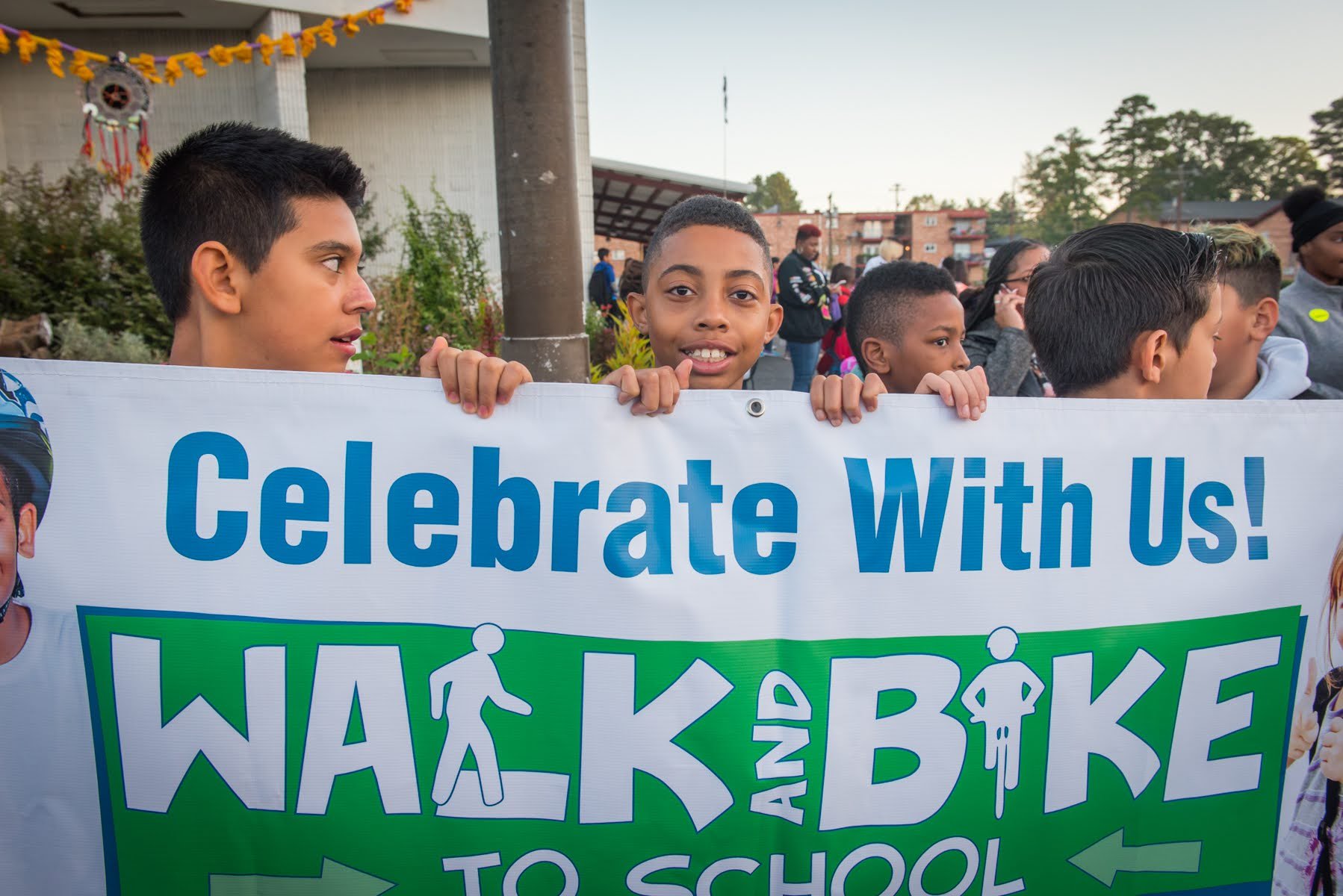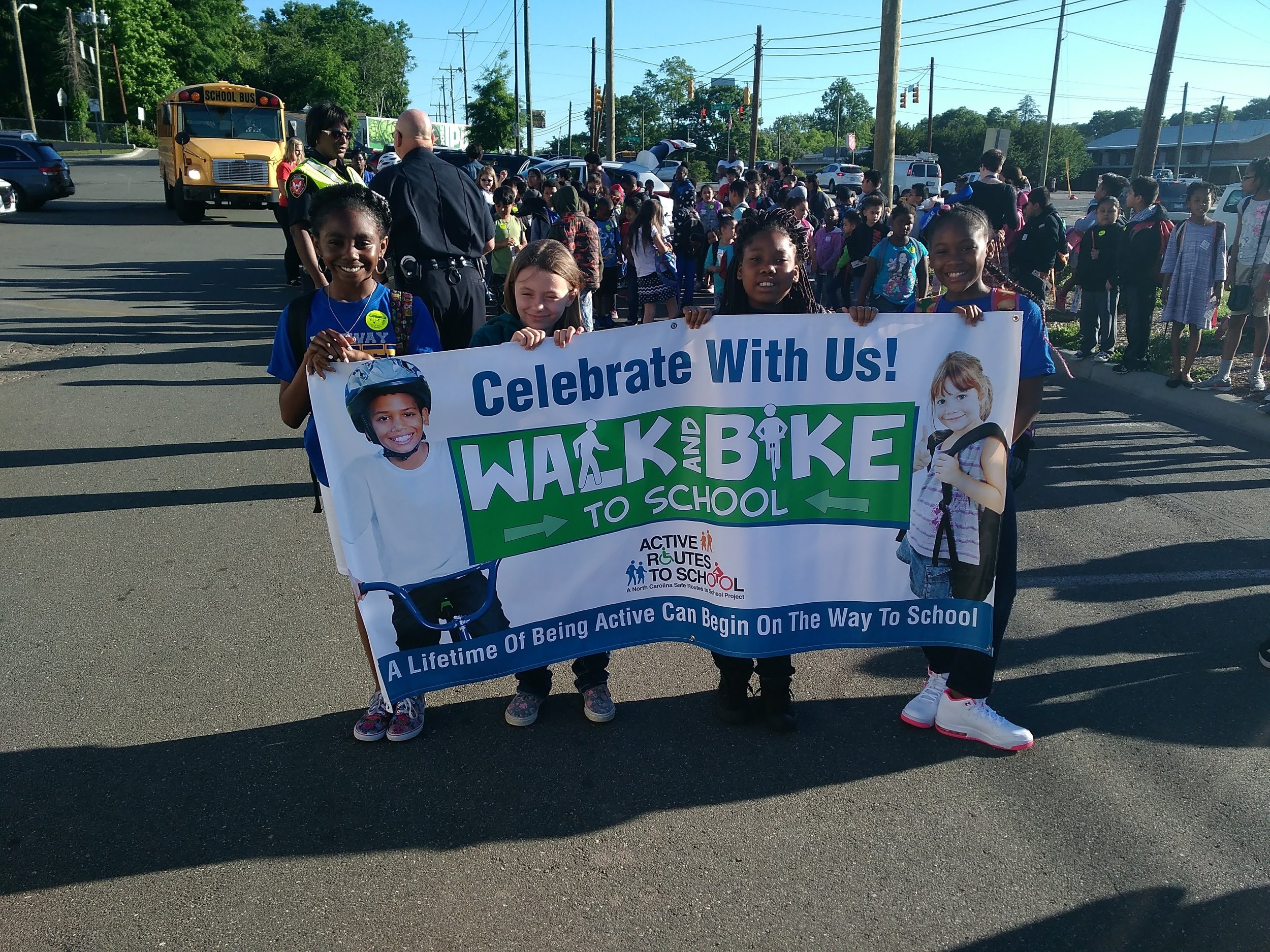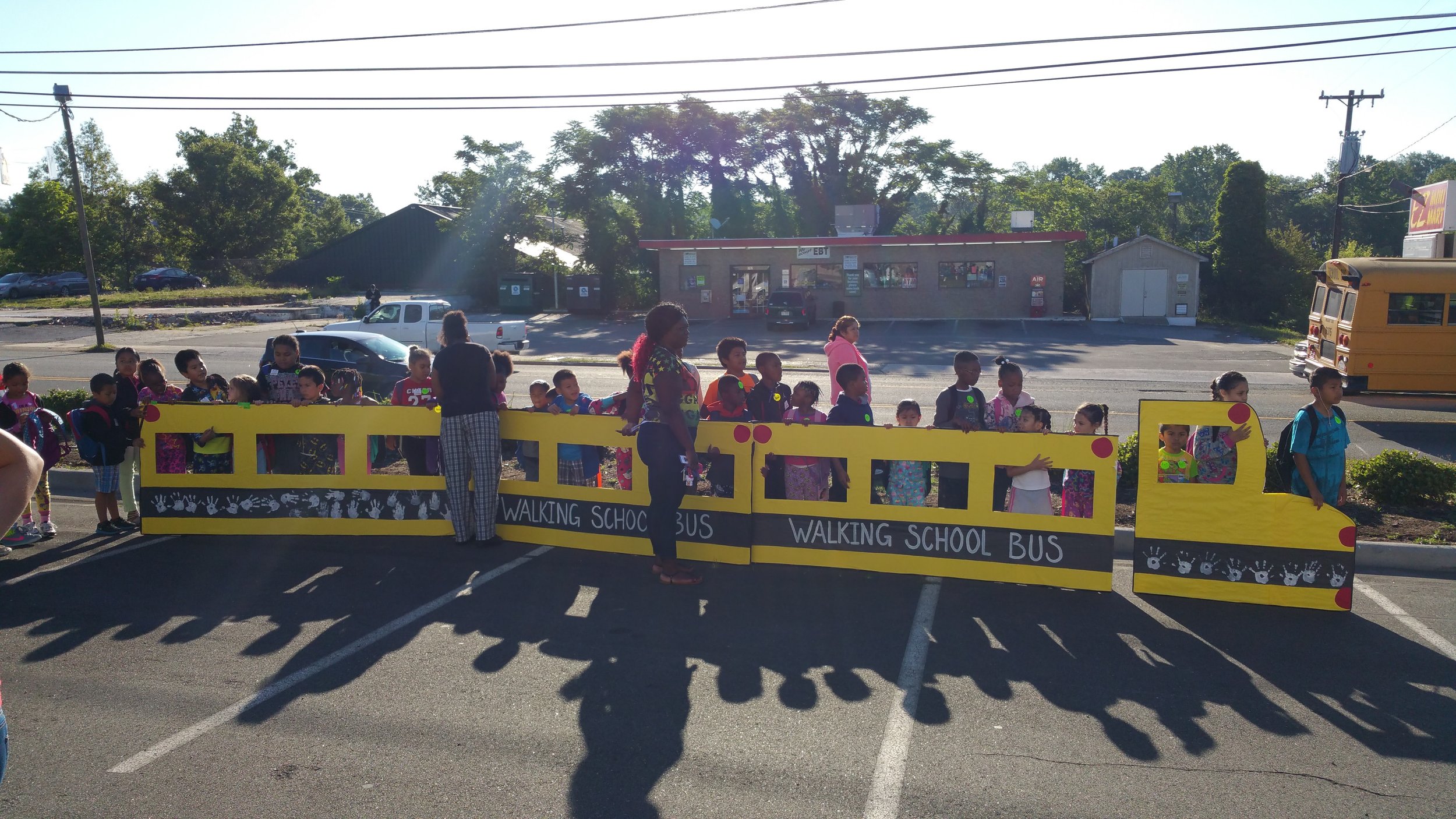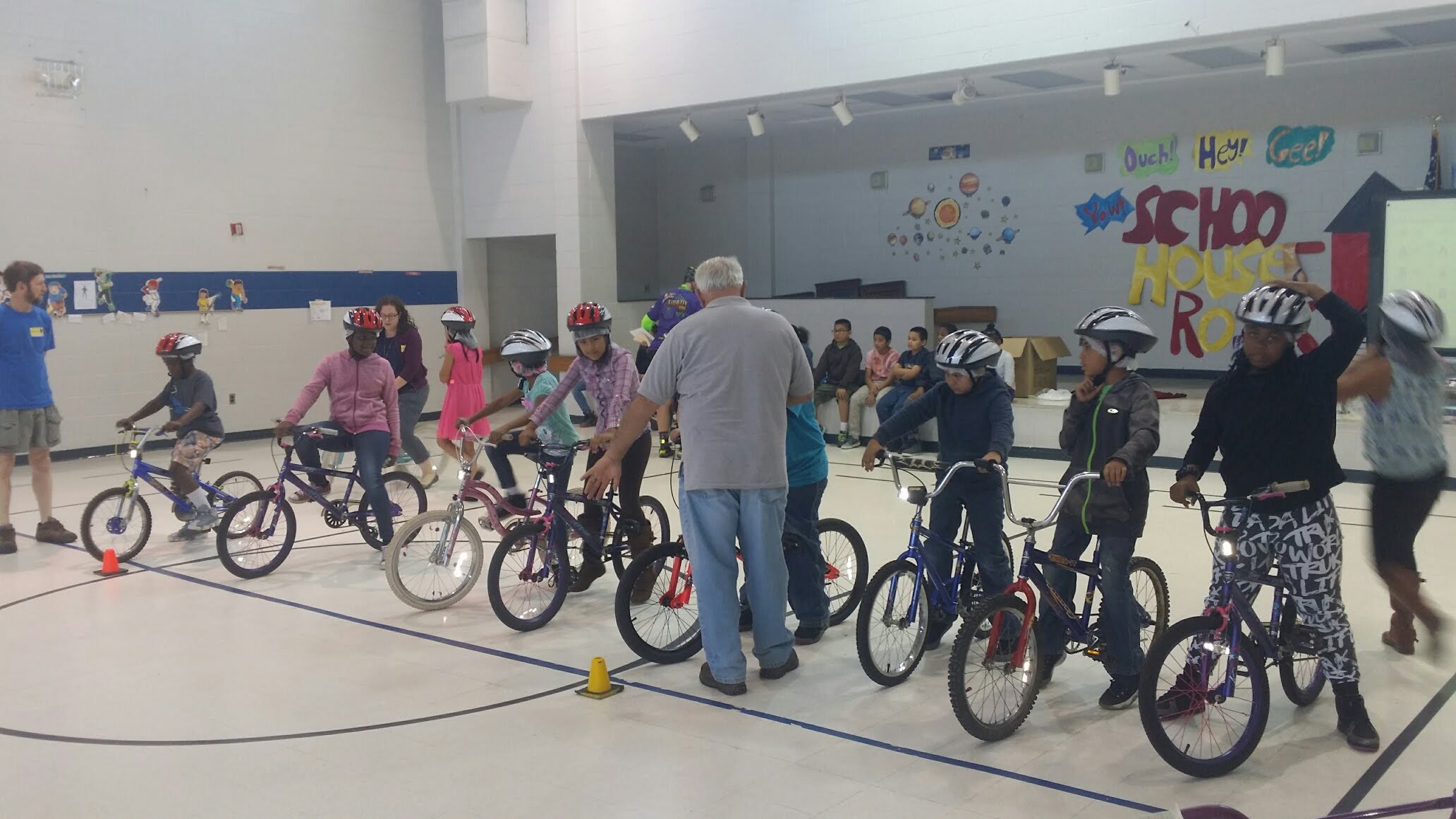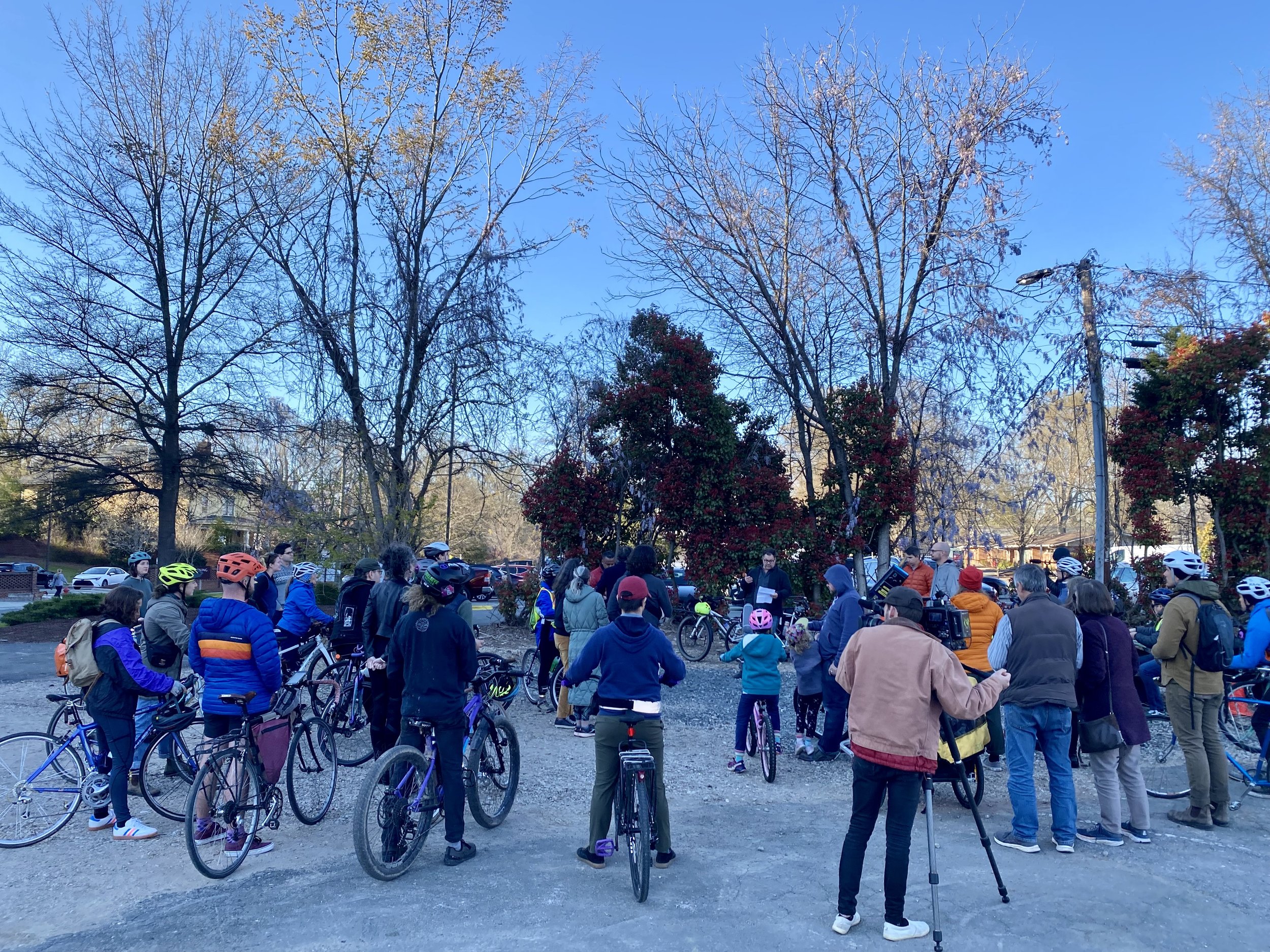Bike Durham sobre las Zonas de Responsabilidad Familiar en las Escuelas Públicas de Durham (DPS)
For English, CLICK HERE
Muchos padres de estudiantes en las Escuelas Públicas de Durham (DPS) han estado viviendo semanas complicadas debido a la falta de conductores de autobuses escolares. Hace poco, la Junta de DPS aprobó una nueva política que eliminará el servicio de autobús para muchas familias de las escuelas primarias. Esta política, llamada Zona de Responsabilidad Familiar (o Zonas de Caminata), elimina el servicio de autobuses en un rango de 1 a 1.5 millas alrededor de las escuelas afectadas, siguiendo ciertos criterios (ver diapositiva 11).
Caminata a la Escuela, Octubre 2024, Escuela Primaria Holt
Con esto, sumado a los retrasos y cancelaciones por el clima invernal reciente, muchas familias están enfrentando un tiempo de gran incertidumbre.
Sin embargo, cada desafío es una oportunidad para generar un cambio positivo.
En Bike Durham estamos colaborando con el equipo de Rutas Seguras a la Escuela de DPS, padres afectados y administradores escolares para apoyar a las familias que se han quedado sin opciones de transporte escolar. Estamos trabajando en recursos para ayudar a los padres a organizar “autobuses escolares a pie” y “trenes de bicicletas” en sus comunidades. Aunque la implementación de la Zona de Responsabilidad Familiar ha traído desafíos significativos para las familias, también representa una oportunidad para que más estudiantes y familias caminen o usen bicicleta para ir a la escuela, conectándose con sus comunidades y disfrutando los beneficios de empezar el día en movimiento.
¿Qué puedo hacer como papá, mamá u organizador de mi comunidad?
El éxito de estas iniciativas depende de los padres, quienes son clave para generar entusiasmo y organizar a la comunidad escolar. Solo se necesita que uno o dos adultos entusiastas (generalmente padres o tutores) tomen la iniciativa para que la participación comience a crecer a medida que más estudiantes se enteran de que sus amigos están caminando o yendo en bicicleta a la escuela.
Un ejemplo claro de esto es David Bradway, líder voluntario de Bike Durham y padre de un estudiante de DPS. David ha trabajado junto a otros padres para organizar un Tren de Bicicletas semanal que reúne a estudiantes (y algunos padres) todos los miércoles por la mañana, sin importar el clima, para viajar desde un parque local hasta la escuela primaria E.K. Powe.
David comparte cómo las familias en E.K. Powe han encontrado maneras de adaptarse a esta nueva realidad:
“En la escuela primaria E.K. Powe, muchos estudiantes caminan, usan bicicleta o son llevados en carro. Sin embargo, hay familias que se han visto afectadas por el servicio rotativo de autobuses y los cambios de la Zona de Responsabilidad Familiar. Para ayudar a estos padres, enviamos mensajes a través de la lista de correos del PTA y de la aplicación Seesaw de la escuela. Estos mensajes ayudaron a las familias a coordinar planes de carpool, conectando a quienes necesitaban transporte con quienes podían ofrecerlo. En otras escuelas, los padres han usado grupos de WhatsApp para organizarse mejor. En nuestra escuela, también organizamos un paseo semanal en bicicleta llamado el ‘Bike Train’ (Tren de Bicicletas). Este paseo sigue el modelo de otros movimientos de trenes de bicicleta que existen en el país y el mundo. Lo promocionamos en listas de correo del vecindario y en redes sociales. Pedimos que un adulto acompañe a cada grupo de niños que participe, y dejamos claro que los organizadores no asumen ninguna responsabilidad legal por el paseo.”
Otros padres han estado involucrados en este proyecto, Scotty Mathess ha estado a carga de los correos electrónicos semanales:
“Hola a todos:
Mañana es miércoles y eso significa que el Tren de Bicicletas de E.K. Powe estará listo para salir. Nos reunimos a las 7:30 am en las canchas de tenis del parque Oval para ir juntos a la escuela, celebrar la amistad y el transporte activo. Ahora más que nunca, el movimiento de Tren/Autobús de Bicicletas es importante para nuestra comunidad, especialmente con los cambios en el sistema de transporte de DPS.
Recuerden que cada voz cuenta. Participen en los comentarios públicos sobre el plan de caminatas y bicicletas de Durham para mejorar las condiciones de transporte en nuestros barrios.
Nos vemos mañana en las canchas de tenis del parque Oval a las 7:30 am. ¡Abrigarse bien y traer luces si es necesario! Como siempre, les recordamos que si manejan por la zona o cerca de la escuela por la mañana, conduzcan con precaución y reduzcan la velocidad. Hay niños y familias en la calle, y todos queremos llegar a salvo a nuestro destino.
¡Nos vemos allí!”
Tren de Bicicletas Semanal, Diciembre 2024, Escuela Primaria E.K. Powe
Sabemos que andar en bicicleta no es una opción para todos, pero estas estrategias también pueden aplicarse para organizar grupos de caminatas. Esperamos que estas iniciativas sean cada vez más comunes a medida que las familias se adapten a la eliminación del servicio de autobuses.
Si te interesa unirte como voluntario para apoyar a las escuelas, por favor contáctanos en education@bikedurham.org. Estamos aquí para ayudar a las 21 escuelas afectadas, proporcionando apoyo en la planificación de rutas y el inicio de grupos organizados de caminata y bicicleta.
¡Hagamos que más jóvenes de Durham disfruten del camino a la escuela con una sonrisa en sus rostros, empezando el día con energía positiva!
Por un transporte seguro, accesible y sostenible para todos nuestros estudiantes.
Hemos creado un documento práctico de 1 página con recursos útiles para padres, tutores y líderes comunitarios, y lo compartiremos con las 21 escuelas afectadas.
Haz clic en las imágenes para verlas en tamaño completo
Misión de Bike Durham
A través de eventos, defensa y educación, Bike Durham empodera a las personas a caminar, andar en bicicleta y usar el transporte público con mayor frecuencia.
Visión de Bike Durham
Creemos que todos deberían tener acceso a transporte seguro, accesible y sostenible, sin importar quiénes sean o dónde vivan.
recursos adicionales:
Haga clic aquí para ver los detalles de cada zona y la lista de escuelas afectadas
Bike Durham on DPS Family Responsibility Zones
Many parents of students in Durham Public Schools (DPS) have been in turmoil scrambling in the last few weeks due to the shortage of school bus drivers. The DPS Board recently approved a policy that will remove school bus service as an option for many families at DPS elementary schools. The policy is called the Family Responsibility Zone (walk zones), which cuts bus service from areas up to 1-1.5 miles from each affected school, following this criteria (slide 11)
Walk to school October 2024, Holt Elementary school
Factor in the recent delayed starts and cancellations due to winter weather, and this has been a rocky and uncertain time for many families.
However, every period of disruption creates an opportunity for positive change.
Bike Durham is working closely with the DPS Safe Routes to School team, affected parents, and school administrators to provide support to the families that are affected by the bus shortages. We are creating resources to help parents navigate the logistics of starting “walking school buses” and “biking trains” in their school communities. While the Family Responsibility Zone is a disruption that is sure to create many challenges for DPS families, it is also an opportunity for more students and families to walk or bike to school, connecting with their communities and experiencing the joy and benefits of moving their bodies on the way to school every day.
What can I do as a parent or community organizer?
Making walking school buses and biking trains successful at a school depends on contributions from the parents, whom we rely on to rally excitement and coordinate within the school community. It all starts with a few enthusiastic adults (usually parents or guardians) who take the lead, often just one or two, who are dedicated and consistent. From there, participation snowballs as more students learn their friends are walking, biking, or rolling to school.
David Bradway, Bike Durham volunteer leader and DPS parent, has coordinated with other parents to establish a weekly Bike Train that gathers students (and some parents) every Wednesday morning (regardless of weather) to travel from a city park to E.K. Powe Elementary.
David describes how he and other families at E.K. Powe have been coming together to address the new school transportation realities.
‘’At EK Powe elementary school, we have many students who walk, bike, or are dropped off by car. There are families, however, who have been negatively impacted by the rotational bus service and FRZ changes. To help these parents with carpool plans, messages went out through the PTA's email listserv and the school's communication channels such as the Seesaw app. These messages instructed people in need of carpools or who were willing to drive to reach out to a specific point of contact who helped serve as matchmaker. Other schools have used WhatsApp chat threads to plan carpools and other transportation strategies. At EK Powe, there is also a weekly bike-to-school group ride which is organized by parents, without direct involvement from the school or PTA. We call this weekly ride the BikeTrain, and it follows the model of similar "bike bus" rides elsewhere in the country and world. We have utilized the local neighborhood email lists and occasionally social media to promote this ride. We require a parent or other adult to accompany each group of kids who joins the ride, and the parent volunteer organizers do not assume responsibility or liability for the ride.’’
Other parents have been involved in this project, Scotty Mathess has been in charge of weekly emails:
‘’Hello Friends, neighbors, caregivers, parents.
Tomorrow is Wednesday again which means we climb aboard the EK Powe Bike Train at 7:30 am at the Oval Park Tennis Courts to ride to school and celebrate friends and active transportation. The mission of the Bike Train/ Bike Bus movement is even more important to our community now that the DPS transportation system has changed. More people than ever have a good reason to ride and walk to school. Be sure to check out the public comment for the Durham walk and bike plan update and make your voice heard to improve conditions for walking and biking in your neighborhood! Every voice helps improve conditions for those who can't or choose not to drive cars, which in turn makes things better for those who must, or choose to drive.
So once again we meet at the tennis courts at Oval Park at 7:30 am and roll out shortly thereafter, Dress warm and lights are recommended. And as Usual if you must drive in the neighborhood or near the school in the morning, remember that there will be children and parents out so slow down, use due caution, and avoid distractions, so everyone can get where they are going safely.
Hope to see you there!’’
Weekly Bike Train December 2024, E.K. Powe Elementary School
While biking is not suitable and accessible to all, these same strategies can be applied to walking groups, which we expect to be more common as a response to the elimination of bus services.
If you are interested in joining our group of volunteers to help support schools, please reach out to education@bikedurham.org. We will offer assistance to all of the 21 affected Elementary schools in routes planning and kickstarting organized walking and biking groups.
Let’s help families so more of Durham youth will enjoy a fun and energetic walk or ride to school, and start the day with a big smile on their faces!
To a great continuation of our mission in giving safe, affordable, and sustainable access to all of our students to their beloved campuses.
We have created a compact and shareable 1-page to provide guidelines for parents, guardians, and community leaders and we will share it with all of the 21 schools affected.
Click on the images for a full size version
Bike Durham Mission
Through events, advocacy, and education, Bike Durham empowers all people to walk, bike, and ride transit more often.
Bike Durham Vision
Everyone should have access to safe, affordable, and sustainable transportation regardless of who they are or where they live.
Additional resources:
Click here to see DPS Safe Routes To School team’s implemented resources (SRTS)
Click here to see the details of each zone, and the list of affected schools.



















